Thinking About a 3-Bedroom Home? Here’s What to Know
If you’re considering a three-bedroom home, you’re in good company. This size works for many people because it adapts easily to different stages of life. Here’s what to know as you explore floor plans and features.
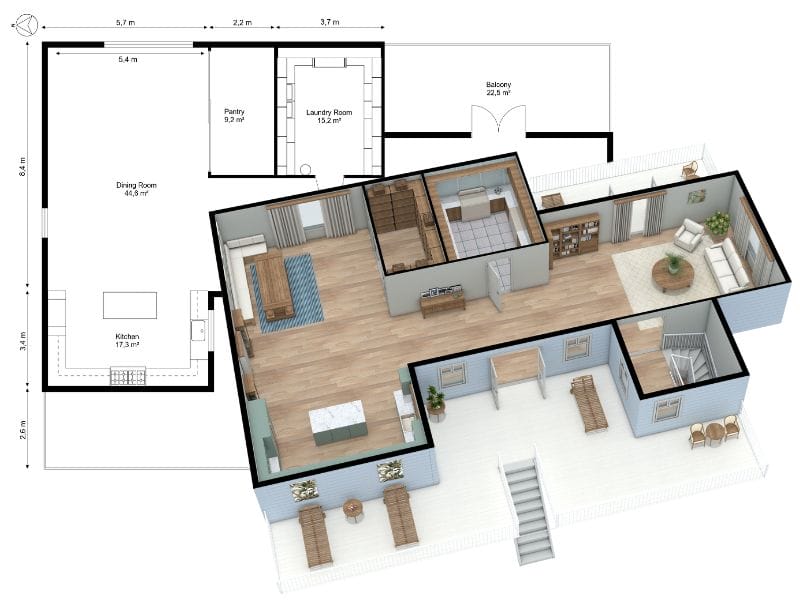
Three-bedroom homes are one of the most common home sizes in many countries. In the US, they make up almost half of all new builds.
A three-bedroom home gives you room to live comfortably today and still adapt as life changes. Extra rooms can become an office, guest room, nursery, hobby space, or even be rented out for extra income. It’s a versatile choice whether you’re starting fresh or downsizing later in life.
Why Three Bedrooms Work for So Many
A three-bedroom layout adjusts easily as your needs evolve. Here are some common ways people use the space:
- New couples: Use the extra rooms for an office, guest space, or rent one out
- Growing families: Create a nursery, keep an office, or add a playroom
- Families with older kids: Each child gets their own room
- Singles: Rent out one or two bedrooms to help cover the mortgage
- Empty nesters: Keep a hobby room and a dedicated guest room
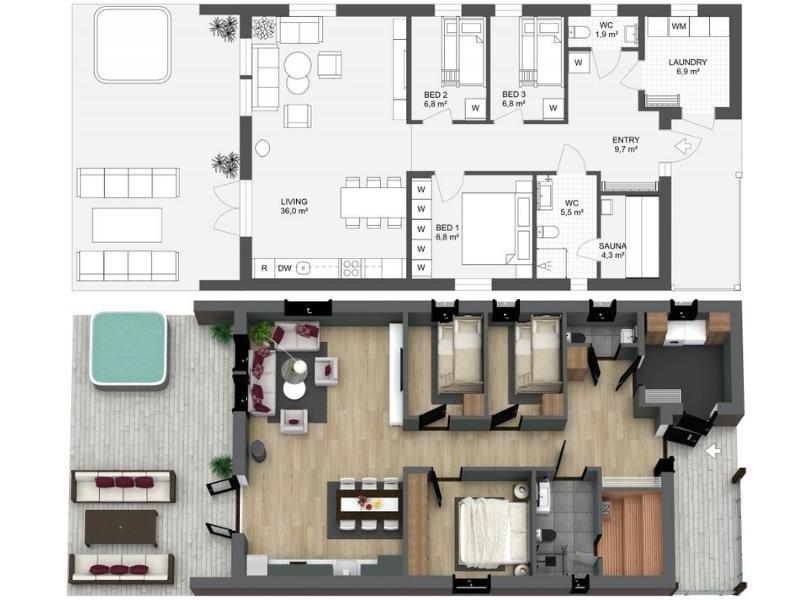
Common Sizes and Layouts
In the US, a typical three-bedroom home is close to 2,000 sq ft (about 185 m²). In many other countries, the same layout can be quite a bit smaller depending on land, regulations, and building style.
Most three-bedroom layouts include:
- One primary bedroom
- Two smaller bedrooms
- Two to two-and-a-half bathrooms
- Increasingly common: three full bathrooms
- Available as both one story and two story homes
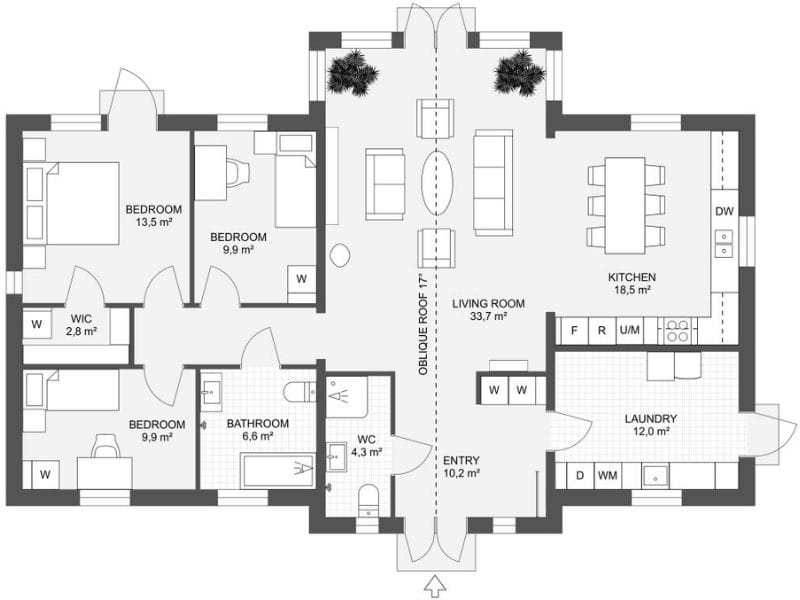
What to Look For in a Three-Bedroom House Plan
1. Bedroom layout and size
Take a moment to compare the two smaller bedrooms. If you plan for children, similarly sized rooms make things easier.
If you’re an empty nester, the size difference matters less. You might prefer one larger guest room and a smaller room you can use as an office or hobby space.
2. Storage that works for you
Good storage makes everyday living more comfortable. Look at the kitchen layout, closet space, linen storage, and any garage or utility storage. These small details make a significant difference in how the home feels day-to-day.
3. Open concept or more defined rooms
Think about how you prefer to live. Open layouts create a bright, spacious feel and make it easy to keep an eye on kids. More defined rooms provide helpful separation if several people will be working or studying at home.
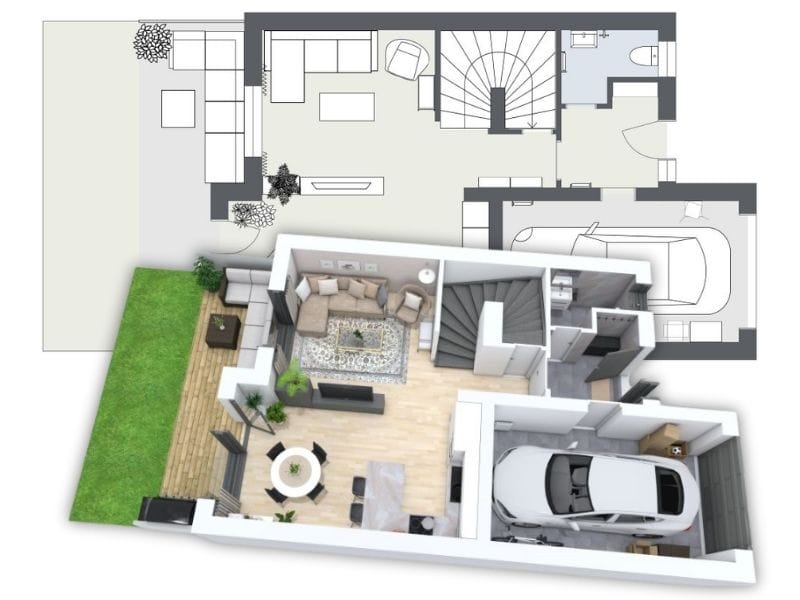
4. A spot to work from home
If all bedrooms will be used, see whether the floor plan offers a nook or landing where you can fit a desk. Even a small space near the kitchen or stairs can be enough for a simple work setup.
5. Space to grow later
If you know you may want more room over time, look for layouts with a basement, attic, or clear expansion options. These areas can become a playroom, teen hangout, home gym, or another bedroom if needed.
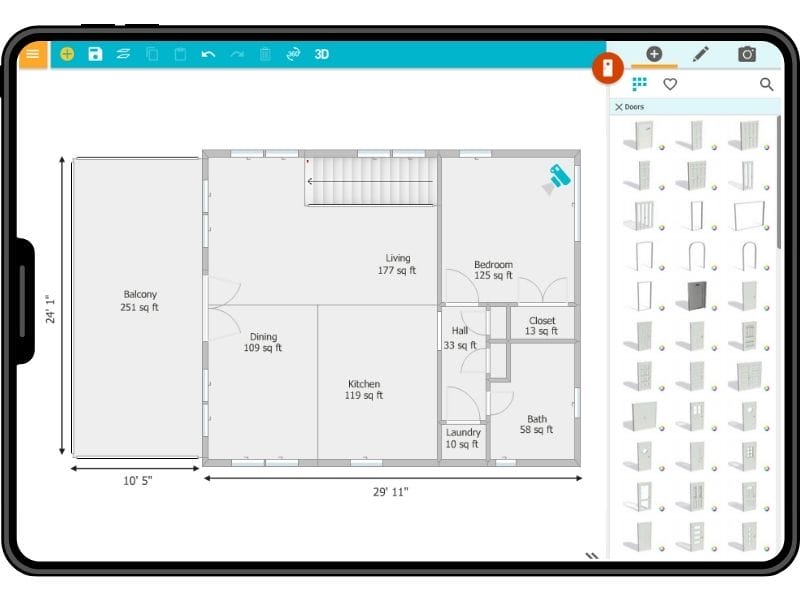
Create Floor Plans With RoomSketcher
Planning your home is easier when you can see your options clearly. With RoomSketcher you can:
- Draw 2D and 3D floor plans in minutes
- Add measurements and labels so everything is easy to understand
- View your layout in 3D Photos and Live 3D
- Try furniture and materials before you commit
- Share your plan with builders, contractors, or clients
Related Articles

Four Bedroom House Plans: Layout Ideas and Design Tips
Four bedroom house plans are ideal for families with three or four children. With parents in the master bedroom, that still leaves three rooms available, so each child can have their own space, or two can share a room.

What to Look for in a 5 Bedroom House Plan
A 5 bedroom house plan gives you space to grow, live comfortably, and adapt your home to your family’s needs. These plans usually start just under 3,000 sq ft (about 280 m²) and can go well beyond 8,000 sq ft (740 m²).

Two-Bedroom House Plans: Tips, Layouts, and Inspiration
Two bedroom house plans are a popular choice for many homeowners. They’re affordable to build, flexible to live in, and can fit a wide range of lifestyles.
